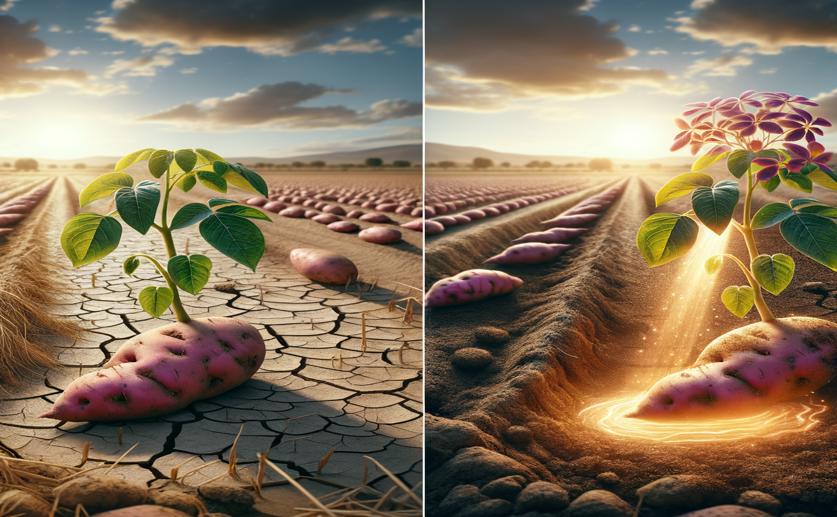
Boosting Sweet Potato Health with Chitosan and Humic Acid During Drought
Jenn Hoskins
17th March, 2024

Image Source: Natural Science News, 2024
Key Findings
- Study shows humic treatments boost crop yield by 66.9% and water efficiency by 68.4%
- Applying humic substances to soil during low water periods increases yields more than foliar sprays
- Combining chitosan and humic treatments maximizes crop yield under varied drought conditions
AgricultureBiotechPlant Science
References
Main Study
1) Chitosan combined with humic applications during sensitive growth stages to drought improves nutritional status and water relations of sweet potato.
Published 16th March, 2024
https://doi.org/10.1038/s41598-024-55904-x
Related Studies
2) Stimulating growth, root quality, and yield of carrots cultivated under full and limited irrigation levels by humic and potassium applications.
3) Impact of different sowing dates and irrigation levels on NPK absorption, yield and water use efficiency of maize.
4) Phenylalanine supply alleviates the drought stress in mustard (Brassica campestris) by modulating plant growth, photosynthesis, and antioxidant defense system.
5) Photosynthesis Product Allocation and Yield in Sweet Potato in Response to Different Late-Season Irrigation Levels.



 14th March, 2024 | Jim Crocker
14th March, 2024 | Jim Crocker